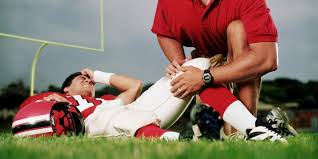The initial phase of rehabilitation for sports injuries is rest. By reducing or adjusting activities that stress the injured area, the body has the opportunity to heal without causing additional harm. Low-impact exercises like walking or swimming can maintain circulation and prevent muscle stiffness.
The key is to modify activity levels to avoid overloading the injury site while still promoting movement. Staying inactive for too long can lead to muscle atrophy and joint stiffness, which may delay recovery. Balancing rest and gentle movement makes for a smoother, faster healing process.
Functional Exercises and Strength Training
Once the injury begins to heal, you want to rebuild strength in the affected area. Functional exercises help restore movement by mimicking everyday actions, preparing the body for normal tasks and performance. These exercises can help with healing and preventing future injuries.
Balance training is another component, particularly for sports injuries to joints like the knee or ankle, as it helps improve coordination and stability. Gradually reintroducing sport-specific drills also plays a role in returning athletes to full activity levels. Strengthening muscles around the injury can help reduce the likelihood of reinjury and improve overall physical readiness.
Physical Therapy
Physical therapy is an integral part of the rehabilitation process. A physical therapist creates a personalized recovery plan based on the nature of the injury and the individual’s progress. This tailored approach helps improve mobility, reduce pain, and strengthen the injured area.
Manual therapy is one technique commonly used, which includes joint mobilizations and soft tissue massage to improve flexibility and alleviate discomfort. Additionally, therapeutic ultrasound may be employed to reduce inflammation and enhance blood flow to the injured site. Stretching exercises are also incorporated to prevent tightness and promote flexibility as the body recovers.
R.I.C.E Method for Sports Injuries
The R.I.C.E method is a widely recognized treatment for acute injuries, especially in the first few days after the injury occurs. It stands for Rest, Ice, Compression, and Elevation, each of which plays a role in controlling pain and swelling. Resting the injured area helps prevent further strain. Applying ice in intervals of 20 minutes helps reduce swelling and provides pain relief.
Progressive Load Training
This method gradually increases the intensity of exercises, allowing the body to adapt to greater demands without risking reinjury. Starting with light weights or low-intensity movements, the load is increased progressively under professional supervision. This process helps rebuild strength and restores the injured area’s functionality. Eccentric exercises, which involve lengthening muscle contractions, are particularly helpful for tendon injuries such as those to the Achilles or patellar tendon. Gradually increasing intensity helps the body to handle the stresses of normal activity, minimizing the risk of setbacks and promoting a safe return to sports or physical work.
Take Action and Start Your Recovery Today
If you’re recovering from a sports injury, don’t wait to take the first step toward healing. Consult with a physical therapist to create a personalized rehabilitation plan that fits your needs. By following the right techniques, you can aim for a smooth recovery and reduce the chances of reinjury. Start your journey to full recovery today.









Leave a Reply